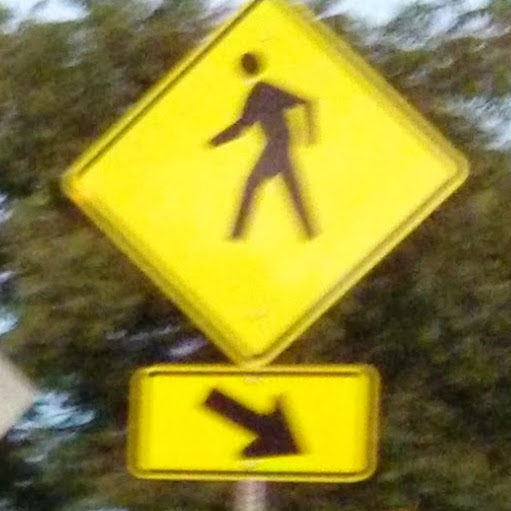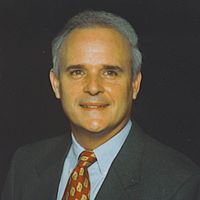Robert J Booth
age ~61
from Clementon, NJ
- Also known as:
-
- Robert H Booth
- Robert M Booth
- Robert J Lewis
- Robt J Booth
- Robert J Robert
Robert Booth Phones & Addresses
- Clementon, NJ
- Claymont, DE
- Wilmington, DE
- Philadelphia, PA
Work
-
Company:3B Orthopaedics
-
Address:800 Spruce St, Philadelphia, PA 19107
-
Phones:(215)8292222 (215)8292478
Education
-
School / High School:University Of Pennsylvania School Of Medicine1971
Languages
English
Awards
Healthgrades Honor Roll
Ranks
-
Certificate:Orthopedic Surgery, 1978
Specialities
Orthopedic Surgery • Radiology
Lawyers & Attorneys

Robert Booth - Lawyer
view sourceSpecialties:
Military Law
Military Law
Military Law
ISLN:
1000191276
Admitted:
1995
License Records
Robert Early Booth
License #:
9293 - Expired
Category:
Architect
Issued Date:
Mar 1, 1983
Expiration Date:
Apr 30, 2014
Organization:
Firm Not Published
Robert A Booth
License #:
CBC1256709 - Active
Category:
Construction Industry
Issued Date:
Jul 3, 2008
Effective Date:
Jul 3, 2008
Expiration Date:
Aug 31, 2018
Type:
Certified Building Contractor
Organization:
ATLANTIC CUSTOM BUILDERS LLC
Robert P Booth
Phone:
(904)8199552
License #:
60235 - Expired
Category:
Health Care
Issued Date:
Jul 24, 1991
Effective Date:
Jan 13, 2015
Expiration Date:
Jan 31, 2015
Type:
Medical Doctor
Wikipedia References

Robert Booth (Rower)

Robert Booth (Tennis)
Isbn (Books And Publications)


Personnel Utilization in Libraries: A Systems Approach
view sourceAuthor
Robert E. Booth
ISBN #
0838931553





Insiders' Guide Boston's Freedom Trail: A Souvenir Guide
view sourceAuthor
Robert Booth
ISBN #
0762740620

Name / Title
Company / Classification
Phones & Addresses
Owner
Community Land Title Corp
Title Companies & Agents
Title Companies & Agents
2400 SE Veterans Memorial Parkway, #214, Port Saint Lucie, FL 34952
(772)3373335, (772)3373441
(772)3373335, (772)3373441
Owner
Power Plus Electric
Affinity Systems Ltd
Electric Contractors
Affinity Systems Ltd
Electric Contractors
22948 128 Ave, Maple Ridge, BC V2X4R8
(604)3418739, (604)4630910
(604)3418739, (604)4630910
Owner
Power Plus Electric
Electric Contractors
Electric Contractors
(604)3418739, (604)4630910
Managing
Robert Booth Consulting LLC
Management Consulting Services
Management Consulting Services
548 Kettle Run Rd, Marlton, NJ 08053
Medical Doctor
Aria 3B Orthopaedics Specialists
Medical Doctor's Office · Offices and Clinics of Medical Doctors, Nsk
Medical Doctor's Office · Offices and Clinics of Medical Doctors, Nsk
601 Walnut St, Philadelphia, PA 19106
(215)4099300
(215)4099300
Black Bear Cabins, LLC
SALEM WRESTLING CLUB, LLC
2ND WIND AD-VENTURES, LLC
Medicine Doctors

Dr. Robert E Booth, Philadelphia PA - MD (Doctor of Medicine)
view sourceSpecialties:
Orthopedic Surgery
Radiology
Radiology
Address:
3B Orthopaedics
800 Spruce St, Philadelphia, PA 19107
(215)8292222 (Phone), (215)8292478 (Fax)
1400 Marlton Pike E, Cherry Hill, NJ 08034
(888)6784632 (Phone)
800 Spruce St, Philadelphia, PA 19107
(215)8292222 (Phone), (215)8292478 (Fax)
1400 Marlton Pike E, Cherry Hill, NJ 08034
(888)6784632 (Phone)
Certifications:
Orthopedic Surgery, 1978
Radiology
Radiology
Awards:
Healthgrades Honor Roll
Languages:
English
Hospitals:
3B Orthopaedics
800 Spruce St, Philadelphia, PA 19107
1400 Marlton Pike E, Cherry Hill, NJ 08034
Lankenau Medical Center
100 East Lancaster Avenue, Wynnewood, PA 19096
Pennsylvania Hospital
800 Spruce Street, Philadelphia, PA 19107
800 Spruce St, Philadelphia, PA 19107
1400 Marlton Pike E, Cherry Hill, NJ 08034
Lankenau Medical Center
100 East Lancaster Avenue, Wynnewood, PA 19096
Pennsylvania Hospital
800 Spruce Street, Philadelphia, PA 19107
Education:
Medical School
University Of Pennsylvania School Of Medicine
Graduated: 1971
Medical School
Pennsylvania Hospital
Graduated: 1972
Medical School
Penn Hospital
Graduated: 1973
University Of Pennsylvania School Of Medicine
Graduated: 1971
Medical School
Pennsylvania Hospital
Graduated: 1972
Medical School
Penn Hospital
Graduated: 1973
Affiliations:
International Congress for Joint Reconstruction, Member
The International Congress for Joint Reconstruction (ICJR) delivers continuing medical education to orthopedic surgeons focused on the latest operative techniques, procedures, advanced devices, and improvements in patient care. Physicians affiliated with ICJR are committed to offering patients the best treatment options available today
The International Congress for Joint Reconstruction (ICJR) delivers continuing medical education to orthopedic surgeons focused on the latest operative techniques, procedures, advanced devices, and improvements in patient care. Physicians affiliated with ICJR are committed to offering patients the best treatment options available today

Robert L. Booth
view sourceSpecialties:
Anatomic Pathology & Clinical Pathology
Work:
University Of Toledo Physicians LLCUniversity Toledo Medical Center Pathology
3000 Arlington Ave STE 2280, Toledo, OH 43614
(419)3833469 (phone), (419)3833066 (fax)
3000 Arlington Ave STE 2280, Toledo, OH 43614
(419)3833469 (phone), (419)3833066 (fax)
Education:
Medical School
University of Toledo College of Medicine
Graduated: 1985
University of Toledo College of Medicine
Graduated: 1985
Languages:
English
Description:
Dr. Booth graduated from the University of Toledo College of Medicine in 1985. He works in Toledo, OH and specializes in Anatomic Pathology & Clinical Pathology. Dr. Booth is affiliated with University Of Toledo Medical Center.

Robert Thomas Booth
view sourceSpecialties:
Anesthesiology

Robert Booth, Philadelphia PA
Work:
Pennsylvania Hospital University PA Health System
800 Spruce St, Philadelphia, PA 19107
Curtis Center
601 Walnut St, Philadelphia, PA 19106
3b Orthopaedics Pc
100 E Lancaster Ave, Wynnewood, PA 19096
800 Spruce St, Philadelphia, PA 19107
Curtis Center
601 Walnut St, Philadelphia, PA 19106
3b Orthopaedics Pc
100 E Lancaster Ave, Wynnewood, PA 19096

Robert Emrey Booth, Philadelphia PA
view sourceSpecialties:
Orthopedic Surgeon
Address:
800 Spruce St, Philadelphia, PA 19107
1400 Marlton Pike E, Cherry Hill, NJ 08034
170 S Independence Mall W, Philadelphia, PA 19106
1400 Marlton Pike E, Cherry Hill, NJ 08034
170 S Independence Mall W, Philadelphia, PA 19106
Education:
University of Pennsylvania, Perelman School of Medicine - Doctor of Medicine
Pennsylvania Hospital - Residency - Orthopaedic Surgery
Pennsylvania Hospital - Residency - Surgery
Pennsylvania Hospital - Residency - Orthopaedic Surgery
Pennsylvania Hospital - Residency - Surgery
Board certifications:
American Board of Orthopaedic Surgery Certification in Orthopaedic Surgery
Us Patents
-
Method And Apparatus For Compressing Hypertext Transfer Protocol (Http) Messages
view source -
US Patent:6345307, Feb 5, 2002
-
Filed:Nov 12, 1999
-
Appl. No.:09/439026
-
Inventors:Robert Charles Booth - Jamison PA
-
Assignee:General Instrument Corporation - Horsham PA
-
International Classification:G06F 1300
-
US Classification:709247
-
Abstract:A method and apparatus for compressing Internet protocol messages, such as HyperText Transport Protocol (HTTP) messages. Codewords ( ) are provided for commonly occurring HTTP data elements, such as request lines, header lines, status lines, or portions thereof, such as method fields, URL fields, version fields, and status codes or messages. The codewords are used to provide a compressed HTTP message with a reduced amount of data relative to ASCII coding. If other data is included with the message, such as an entity body (e. g. , a requested object such as an HTML page), the other data can be coded separately ( ) and recombined ( ) with the codewords for the HTTP data elements. The codewords may have reserved bits for providing specific information about the message. The amount of data that must be communicated, e. g. , to or from a subscriber terminal ( ), is thereby reduced.
-
Method And Apparatus For Defining, Managing And Distributing Broadcast Names
view source -
US Patent:6643707, Nov 4, 2003
-
Filed:Feb 14, 2000
-
Appl. No.:09/503666
-
Inventors:Robert C. Booth - Jamison PA
-
Assignee:General Instrument Corporation - Horsham PA
-
International Classification:G06F 1516
-
US Classification:709245, 709201, 709230, 709203
-
Abstract:The Domain Name System (DNS), which has been used for mapping names to Internet Protocol (IP) addresses, is adapted to a broadcast environment, such as a broadband cable or satellite television network. A number of master files are stored on a broadcast name server that define zones of domains in a domain name space, which may include a television-related domain, with sub-domains for different service providers (e. g. , ABC, HBO), and a cable domain, with sub-domains for applications, administrative functions and operating system-functions, e. g. , at a set-top terminal. The television sub-domains may have their own sub-domains. For example, âABCâ may have the sub-domains âNEWSâ, âWEATHERâ, and âSPORTS. â The master files are used to form broadcast resource records, which include an identifier for broadcast services (e. g. , âABCâ) or other data sources, and which are transmitted to end user terminal devices periodically, or in response to a query.
-
Object And Feature Authorization For Digital Communication Terminals
view source -
US Patent:6832323, Dec 14, 2004
-
Filed:Oct 5, 2000
-
Appl. No.:09/679994
-
Inventors:Robert Charles Booth - Jamison PA
Donald Tavoletti - Warrington PA
Michael Difiglia - Jenkintown PA -
Assignee:General Instrument Corporation - Horsham PA
-
International Classification:G06F 1130
-
US Classification:713201, 713200, 709225, 707 9
-
Abstract:A system for security and authorization processing in digital terminals. The processing load of a security processor ( ) at the terminal ( ) is reduced by configuring a multiple applications manager (MAM) ( ) to determine if frequently-transmitted application data should be downloaded. The security processor is used by the MAM to build a local virtual application table ( ) that indicates which applications are authorized for downloading. The security processor configures the terminal with an authorization state so that it knows which applications it is authorized to download, i. e. , the applications ( ) whose required authorization state correlate with the terminals configured authorization state. The security processor is accessed when the terminals authorization state changes, or when a required authorization state of an application changes. These events are typically relatively infrequent.
-
System And Methods For Automatically Selecting, Mapping And Designating Components For Digital Cable Service Distribution Systems
view source -
US Patent:20020032908, Mar 14, 2002
-
Filed:Aug 17, 2001
-
Appl. No.:09/932289
-
Inventors:Robert Booth - Jamison PA, US
-
Assignee:General Instrument Corporation - Horsham PA
-
International Classification:H04N007/173
G06F003/00
H04N005/445
G06F013/00 -
US Classification:725/086000, 725/037000, 725/061000
-
Abstract:A system and methods are provided for selecting head-end equipment and services for digital cable service distribution systems. Enhancing CATV service capabilities to include digital services can be expensive, especially since design and configuration of head-end equipment requires a great deal of engineering expertise. The invention improves efficiency by providing an automated rule-based system and method to help ease that task. The invention also functions to present the listing of required components in a Bill of Material (BOM) format that could be implemented with customer specific pricing structures to facilitate purchase requisition and order fulfillment. Another function of the invention is to facilitate mapping between an end-user display channel, a terrestrial broadcast frequency, and a satellite communications frequency. The relationship between services, service providers, and the necessary component configurations are presented in an easily recognizable format, referred to as a “Channel Map.” These features are provided by a user-interface that permits channel assignment and configuration tasks to be performed more easily. Although the invention is presented in the context of a networked solution, the rule-based system could just as well be implemented on a single computer system.
-
Server-Based Software Architecture For Digital Television Terminal
view source -
US Patent:20040073944, Apr 15, 2004
-
Filed:Oct 15, 2002
-
Appl. No.:10/270998
-
Inventors:Robert Booth - Jamison PA, US
-
Assignee:General Instrument Corporation - Horsham PA
-
International Classification:H04N007/173
-
US Classification:725/131000, 725/120000, 725/110000
-
Abstract:Server software is utilized as a fundamental building block for the software architecture of digital television terminals (DCTs) and related devices (remote clients). For example, a web page may be stored on a digital terminal for access by a user of a client device to request specific actions to be performed or to request information. The client device communicates user requests to the digital terminal, whereupon an appropriate web page is retrieved by the server software and transmitted to and displayed on the client device. The user may subsequently make a selection via the web page, whereupon the client device sends the request back to the digital terminal. The client device can be used, e.g., to request a specific television channel via a web-type interface, in response to which the server software in the terminal will tune an associated television and return a new web page to the client device, indicating that the channel was successfully tuned.
-
Methods And Apparatus For Integrating One-Way And Two-Way Security Systems To Enable Secure Distribution Of Encrypted Services
view source -
US Patent:20040162780, Aug 19, 2004
-
Filed:Feb 19, 2003
-
Appl. No.:10/368845
-
Inventors:Robert Booth - Jamison PA, US
-
Assignee:General Instrument Corporation - Horsham PA
-
International Classification:G06F017/60
-
US Classification:705/050000
-
Abstract:The present invention provides methods and apparatus for integrating one-way and two-way security systems to enable secure distribution of services. A decryption device securely receives and decrypts encrypted services from one or more service providers. A consumer device securely communicates with the decryption device. A user interface associated with the consumer device initiates a service request for a requested service from a service provider. In operation, the service request is communicated from the consumer device to the decryption device. The requested service is then acquired by the decryption device as an encrypted requested service. The acquired requested service is then decrypted by the decryption device. The requested service is re-encrypted and securely communicated from the decryption device to the consumer device. The re-encrypted requested service is then decrypted and decoded at the consumer device to provide the requested service.
-
Methods And Apparatuses For Authorizing Use Of An Information Processing Feature
view source -
US Patent:20070083936, Apr 12, 2007
-
Filed:Sep 27, 2005
-
Appl. No.:11/236338
-
Inventors:Robert Booth - Ivyland PA, US
Richard Rementilla - San Diego CA, US -
International Classification:H04L 9/32
-
US Classification:726027000
-
Abstract:A method for authorizing use of an information processing feature (“IPF”) () with an information processing device (“IPD”) (). The method includes receiving a data structure (), which includes a first data portion () having information identifying the IPF, identifying a hash algorithm (), and identifying an access condition () usable to provide a logical reference to one or more feature-enabling criteria (). The data structure also includes a second data portion () having information identifying a hash value. The method further includes accessing the feature-enabling criteria, and applying the hash algorithm to at least part of the information in the first data portion to derive the hash value. Based on the derived hash value, authorization to use the IPF with the IPD is obtained.
-
Distal Femoral Knee Prostheses
view source -
US Patent:20070260323, Nov 8, 2007
-
Filed:Dec 14, 2006
-
Appl. No.:11/611021
-
Inventors:Brian Earl - South Bend IN, US
Abraham Habegger - Milford IN, US
Aaron Hoffman - Salt Lake City UT, US
Kim Bertin - Bountiful UT, US
Lawrence Dorr - La Canada CA, US
Robert Booth - Philadelphia PA, US
Aaron Rosenberg - Deerfield IL, US
Sergio Romagnoli - Savona, IT -
Assignee:ZIMMER, INC. - Warsaw IN
-
International Classification:A61F 2/38
-
US Classification:623020350
-
Abstract:A set of distal femoral knee prostheses which are designed to be more narrow in medial/lateral dimensions with increasing anterior/posterior size than existing prostheses to more closely correspond to the physical anatomy of female patients. The prostheses are designed to have a substantially trapezoidal shape or profile when viewed distally which features a more pronounced narrowing of the medial/lateral dimensions beginning at the posterior end of the prostheses and progressing anteriorly to the anterior end of the prostheses. Additionally, the prostheses each include a reduced profile patellar sulcus and reduced profile anterior condyles to more closely conform to the anatomy of a resected femur, and also include sulcus tracking optimized to conform to female anatomy.
Youtube
Googleplus

Robert Booth
Work:
Zenoss, Inc - Senior Solutions Developer (2011)
Trebortech - Owner (2008)
Trebortech - Owner (2008)
Bragging Rights:
Created ReserveMyParty.com

Robert Booth
Work:
Stockham const.
Education:
Deer valley high

Robert Booth
Work:
Mills Shirely LLP - Attorney (2003)

Robert Booth
Education:
Laurel High School

Robert Booth
Work:
Iddings trucking - Truck driver (2011)

Robert Booth
Work:
English provender - Electrical engineer (2005)

Robert Booth

Robert Booth
Flickr
Myspace
Plaxo

Robert Booth
view sourceJacksonville, FL

Robert Booth
view sourceHornchurch, Essex

Robert Booth
view sourceLiberty, Texas

Robert Booth
view sourceL B Printing

robert booth
view sourceRetired

Robert Booth
view sourceROLLS ROYCE

Robert Booth
view sourceRome - Italy

Robert E Booth
view source
Robert E Booth
view source
Robert Buck Booth
view source
Robert A. Booth
view source
Robert J Booth
view source
Robert D Booth
view source
Robert Cloud Booth
view source
Robert Boothy Booth
view sourceClassmates

Robert Booth
view sourceSchools:
Arnold Junior High School Arnold PA 1959-1962, Arnold High School Arnold PA 1963-1965
Community:
Lynda Butler, Roy Hooper, Mark Smith

Robert Booth
view sourceSchools:
Kokomo High School - South Campus Kokomo IN 1999-2003
Community:
Melinda Kitts, Lorena Boles, Bill Collins

Robert Booth
view sourceSchools:
Carsonville-Port Sanilac High School Carsonville MI 1957-1961
Community:
Ted Mullins, Nancy Dawson

Robert Booth II
view sourceSchools:
Thunder Hill Elementary School Columbia MD 1980-1986, Oakland Mills Middle School Columbia MD 1986-1989
Community:
Jack Kiesler, Cecelia Noble, Glenn Ruehl, Paul Aschenbrenner

Robert J Booth
view sourceSchools:
Centennial High School Ellicott City MD 1989-1993
Community:
Jack Kiesler, Cecelia Noble, Glenn Ruehl, Paul Aschenbrenner

Robert Booth
view sourceSchools:
Floyds Knobs Elementary School Floyds Knobs IN 1984-1988
Community:
Pamela Bryant, Michelle Mikels, Wendy Bennington, Judy Lester, M Cornwell

Robert Booth
view sourceSchools:
Triton Central High School Fairland IN 1995-1999
Community:
Michelle Sims, Jay Humphreys, Kenneth Gibbs, Bryan Hopkins
Get Report for Robert J Booth from Clementon, NJ, age ~61


















